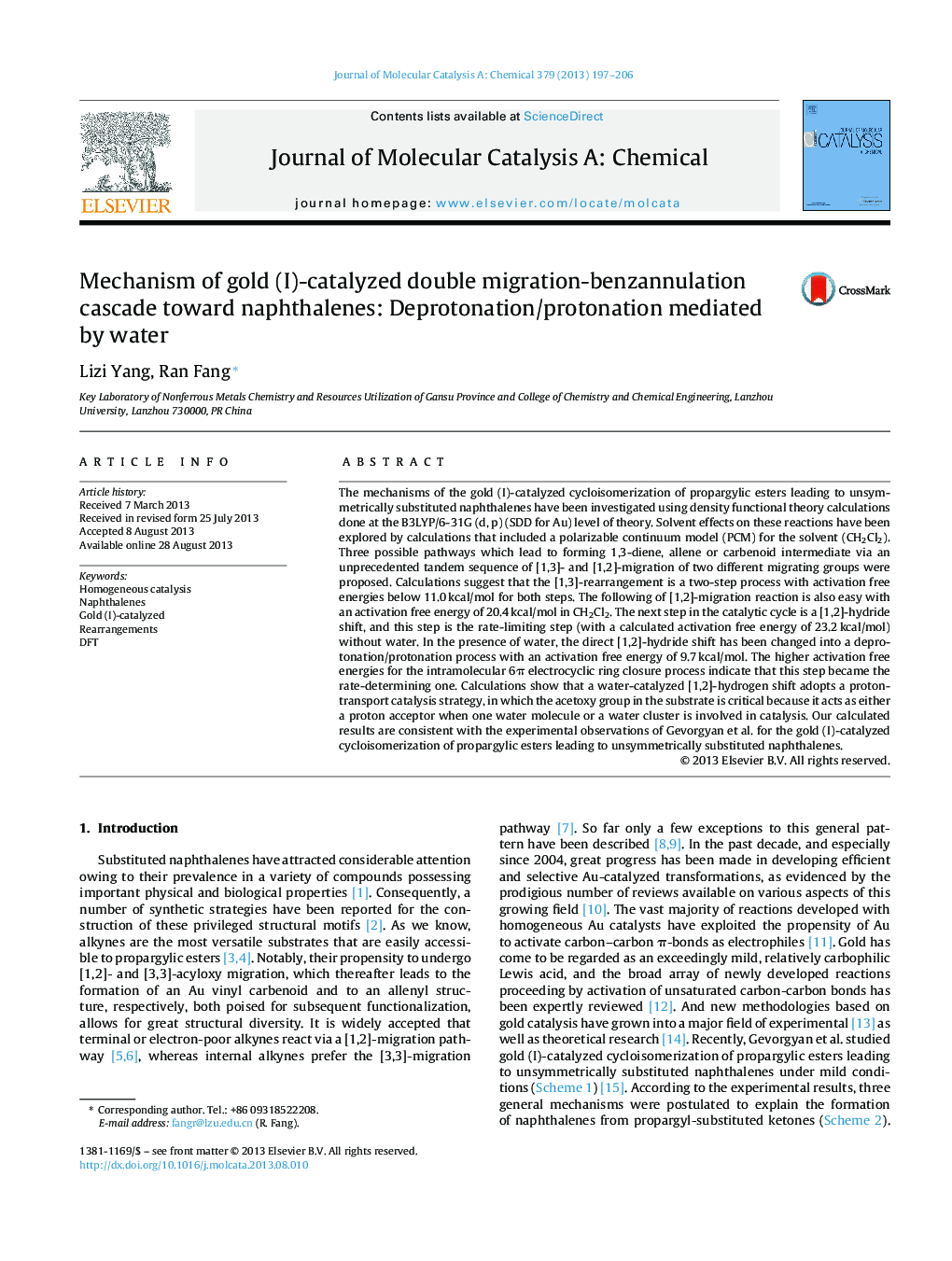| کد مقاله | کد نشریه | سال انتشار | مقاله انگلیسی | نسخه تمام متن |
|---|---|---|---|---|
| 65663 | 48399 | 2013 | 10 صفحه PDF | دانلود رایگان |

• Mechanisms of gold (I)-catalyzed cycloisomerization were investigated.
• Three possible mechanisms for title reaction are considered.
• Theoretical investigation was performed to explain the difference of reactivity.
• Water-assisted [1,2]-H shift for title reaction was located.
• Calculated results are consistent with the experimental observations.
The mechanisms of the gold (I)-catalyzed cycloisomerization of propargylic esters leading to unsymmetrically substituted naphthalenes have been investigated using density functional theory calculations done at the B3LYP/6-31G (d, p) (SDD for Au) level of theory. Solvent effects on these reactions have been explored by calculations that included a polarizable continuum model (PCM) for the solvent (CH2Cl2). Three possible pathways which lead to forming 1,3-diene, allene or carbenoid intermediate via an unprecedented tandem sequence of [1,3]- and [1,2]-migration of two different migrating groups were proposed. Calculations suggest that the [1,3]-rearrangement is a two-step process with activation free energies below 11.0 kcal/mol for both steps. The following of [1,2]-migration reaction is also easy with an activation free energy of 20.4 kcal/mol in CH2Cl2. The next step in the catalytic cycle is a [1,2]-hydride shift, and this step is the rate-limiting step (with a calculated activation free energy of 23.2 kcal/mol) without water. In the presence of water, the direct [1,2]-hydride shift has been changed into a deprotonation/protonation process with an activation free energy of 9.7 kcal/mol. The higher activation free energies for the intramolecular 6π electrocyclic ring closure process indicate that this step became the rate-determining one. Calculations show that a water-catalyzed [1,2]-hydrogen shift adopts a proton-transport catalysis strategy, in which the acetoxy group in the substrate is critical because it acts as either a proton acceptor when one water molecule or a water cluster is involved in catalysis. Our calculated results are consistent with the experimental observations of Gevorgyan et al. for the gold (I)-catalyzed cycloisomerization of propargylic esters leading to unsymmetrically substituted naphthalenes.
Figure optionsDownload high-quality image (125 K)Download as PowerPoint slide
Journal: Journal of Molecular Catalysis A: Chemical - Volume 379, 15 November 2013, Pages 197–206